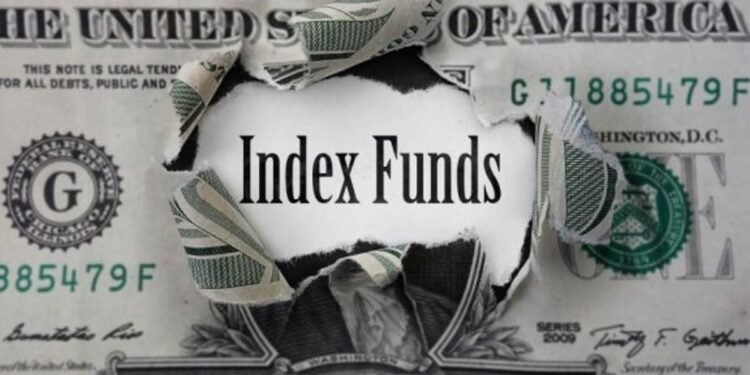Mid-cap index funds are a great tool for investors to get exposure to mid-sized U.S. companies that fall between small-cap and large-cap funds.
Investing in mid-caps can provide more significant growth potential than large-caps without the volatility and instability of small-caps. As such, mid-cap index funds offer a way to strategically diversify your portfolio.
Top 8 Mid-Cap Index Funds
Here are the top eight mid-cap index funds you should consider adding to your portfolio.
| Ticker | Company | ±% | Price | Invest | ||
|---|---|---|---|---|---|---|
1. Vanguard Mid-Cap Index Fund Admiral Shares (MUTF: VIMAX)
| Open– | Close– |
| Vol / Avg.– / – | Mkt Cap– |
| Day Range– – – | 52 Wk Range– – – |
VIMAX offers an excellent core mid-cap index fund option for investors.
VIMAX tracks the CRSP U.S. Mid-Cap Index, a diversified index of stocks of mid-size U.S. companies. VIMAX offers investors wide exposure to over 300 U.S. companies across various sectors, such as technology (18.5% of holdings), industrials (15.4% of holdings) and financials (11.91% of holdings).
VIMAX has an admirable history of strong performance. As of late August 2023, it’s up around 7% YTD. With rock-bottom fees, the fund only charges an expense ratio of 0.05%. The ultra-low-cost structure gives VIMAX an advantage in compounding returns over the long run.
While the fund does have a $3,000 minimum investment, it provides a smart, hands-off approach to mid-cap investing.
2. iShares Core S&P Mid-Cap ETF (NYSEARCA: IJH)
| Open264.740 | Close260.820 |
| Vol / Avg.1.722M / 1.536M | Mkt Cap– |
| Day Range260.770 – 265.420 | 52 Wk Range217.450 – 273.730 |
As one of the largest mid-cap ETFs, IJH offers investors an efficient way to gain diversified exposure to 400 mid-sized U.S. stocks. IJH tracks the S&P MidCap 400 Index.
Since its inception, IJH has enjoyed returns of 9.23%. With low fees of 0.05% and YTD returns of 8.22%, IJH has many potential benefits for investors seeking diversification.
3. Fidelity Mid-Cap Index Fund (MUTF: FSMDX)
| Open– | Close– |
| Vol / Avg.– / – | Mkt Cap– |
| Day Range– – – | 52 Wk Range– – – |
For fee-conscious investors, FSMDX is a great option. The ultra-low expense ratio of just 0.025% and the lack of required minimums to invest extends a major cost advantage that boosts net returns over time. FSMDX tracks the Dow Jones U.S. Mid-Cap Index.
This fund has delivered impressive long-term returns, averaging 10.13% in the last 10 years. Since this fund has no minimum investment requirement, it offers easy access for investors of all types and stages.
4. Schwab S&P Mid-Cap 400 Index Fund (MUTF: SWMCX)
| Open– | Close– |
| Vol / Avg.– / – | Mkt Cap– |
| Day Range– – – | 52 Wk Range– – – |
SWMCX is a strong choice for investors who already bank with Schwab. The fund precisely tracks the S&P Mid-Cap 400 Index of 400 leading mid-sized U.S. companies.
SWMCX charges just a 0.04% expense ratio. This cost has allowed the fund to generate over 8% annual returns over the last decade, outpacing many pricier active funds.
SWMCX doesn’t have an investment minimum.
5. Vanguard Mid-Cap Value Index Fund Admiral Shares (MUTF: VMVAX)
| Open– | Close– |
| Vol / Avg.– / – | Mkt Cap– |
| Day Range– – – | 52 Wk Range– – – |
This Vanguard fund tracks the CRSP U.S. Mid-Cap Value Index, which comprises mid-sized U.S. companies that fall into the top 70%-85% of investable market capitalization. A $3,000 minimum investment is required, but the expense ratio is low at 0.07%.
VMVAX’s cumulative performance over 10 years is 146.54%, compared to benchmarks of 147.40%.
6. iShares Russell Mid-Cap ETF (NYSEARCA: IWR)
| Open73.480 | Close72.660 |
| Vol / Avg.1.095M / 915.230K | Mkt Cap– |
| Day Range72.660 – 73.550 | 52 Wk Range60.730 – 76.210 |
IWR is a compelling choice if you’re looking for diversified mid-cap exposure in an ETF wrapper. This fund tracks the Russell Midcap Index, which is made up of over 800 mid-sized U.S. stocks.
Over the past decade, IWR has delivered exceptional returns, gaining 9.67% total returns over 10 years.
7. DFA U.S. Mid-Cap Value Portfolio (NASDAQ: DFMVX)
| Open– | Close– |
| Vol / Avg.– / – | Mkt Cap– |
| Day Range– – – | 52 Wk Range– – – |
This fund selects stocks based on size, relative price and profitability factors. In terms of performance, DFMVX has posted 10.95% annual returns over the past 10 years. The expense ratio is 0.23%, which is reasonable for an active fund.
8. JPMorgan Mid-Cap Value Fund (MUTF: FLMVX)
| Open– | Close– |
| Vol / Avg.– / – | Mkt Cap– |
| Day Range– – – | 52 Wk Range– – – |
As one of the largest active mid-cap value mutual funds, FLMVX provides an experienced manager approach. Regarding returns, FLMVX has gained 8.49% in the last 10 years. Their expense ratio is somewhat higher than some of the other funds in this list at 0.75%.
What is a Mid-Cap Index?
A mid-cap index is a stock market index made up of mid-sized companies, which are usually defined as those with market capitalizations between $2 billion and $10 billion. This is compared to:
- Small-cap: $250 million to $2 billion
- Large-cap: $10 billion to $200 billion
- Mega-cap: $200 billion-plus
Mid-cap indexes include between 400 and 800 stocks.
Benefits of Investing in Mid-Cap Index Funds
Investors can gain several advantages by investing in mid-cap index funds, including the following.
Growth Potential
Mid-caps offer greater growth opportunities than larger companies but more stability than small-caps. Mid-cap earnings are projected to rise faster than large-caps.
Diversification
Mid-cap funds provide exposure to hundreds of mid-sized companies across sectors, which can help you mitigate risk by diversifying your portfolio.
Long-Term Returns
Mid-caps have historically delivered attractive long-term returns, in some cases even exceeding large-caps.
No Active Management Needed
Index funds provide low-cost exposure without high fees charged by actively managed funds.
Risks of Investing in Mid-Cap Index Funds
No investment strategy is without risks, and mid-cap index funds have their fair share.
Volatility
Mid-caps can carry higher volatility than large-caps since they’re less established companies. Volatility refers to how the stock prices rise and fall more frequently.
Periods of Underperformance
Underperformance goes hand-in-hand with volatility. It’s the nature of mid-caps that they sometimes underperform large-caps for extended periods.
Vulnerable to Downturns
Mid-caps tend to be more heavily affected by market declines than large-cap and mega-cap companies.
Where to Invest in Mid-Cap Index Funds
A few excellent options exist for opening an account to invest in mid-cap index funds.
-
securely through Centerpoint Securities’s website
Best For:
Momentum traders
-
Securely through Interactive Brokers’ website
Best For:
Active and Global Traders
-
securely through Magnifi’s website
-
securely through Webull’s app
Best For:
Intermediate Traders and Investors
-
securely through TD Ameritrade’s website
Best For:
Retirement Savers
-
securely through Plus500’s website
86% of retail investor accounts lose money when trading CFDs with this provider. You should consider whether you can afford to take the high risk of losing your money.
Key Factors to Consider When Choosing Mid-Cap Index Funds
Now that you’re familiar with mid-cap index funds and their potential strategic benefits, here are some factors you should consider when selecting funds.
Fund Size and Liquidity
Bigger funds tend to have lower expenses because their costs are spread across more investors. Large funds also trade more, which means it’s easier to buy and sell shares.
Expense Ratio and Fees
Lower fees are crucial because they directly come out of your returns. Even small fee differences added up over decades. Index funds also have lower fees compared to actively managed funds.
Assets Under Management
Funds with more assets can invest in more companies, allowing for better diversification. Their large size also allows economies of scale to reduce costs.
Track Record
Look for funds with at least a 10-year history of strong returns. This metric helps show that the fund can perform well over extended periods, but past performance is no guarantee of future success.
Tracking Error
Tracking error refers to how closely an index fund follows the index it’s designed to track. Index funds should match their benchmark index. Funds with low tracking errors accurately replicate the index.
The Mid-Cap Sweet Spot for Long-Term Growth
Mid-cap index funds represent a compelling option for investors seeking excellent long-term growth fund potential while maintaining some level of stability. Compared to small-caps, mid-caps can benefit from greater liquidity, resources and footing in their markets.
For investors with longer time horizons, mid-caps could deserve a strategic allocation for their ability to deliver standout returns over the long run.
Frequently Asked Questions
A
The Fidelity mid-cap index fund includes 817 holdings across various market sectors. It primarily comprises domestic equities in the industrial, financial and IT verticals.
A
Mid-cap funds specifically target mid-sized companies, while extended-market funds capture small- and mid-caps. Mid-cap funds offer more focused exposure, so the type you invest in depends on your goals and strategy.
A
Yes. Vanguard offers a mid-cap growth index fund called the Vanguard Mid-Cap Growth Index Fund Admiral Shares (VMGMX).













